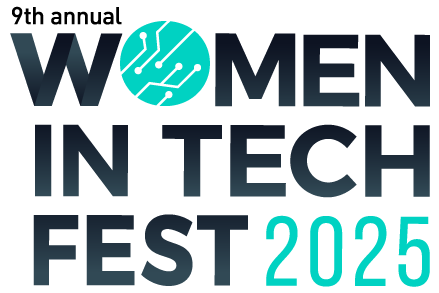In an age where technology shapes every aspect of business, the importance of effective communication between tech and non-tech professionals is undeniable. Yet, the divide in understanding can be substantial, and bridging it requires strategies that prioritise clarity, collaboration, and empathy.
Ahead of Women in Tech Fest 2025, we asked two experts in tech leadership—Sue-Lin Tin, Head of Technology at CBRE, and Holly Hunt, CEO and Founder of Women in Digital—to share their insights on how to improve communication and collaboration between tech and non-tech professionals.
How can tech professionals simplify complex ideas for non-tech stakeholders without losing key details?
Sue-Lin Tin suggests that understanding the unique perspectives of non-tech stakeholders is critical. She explains that tech professionals should "frame ideas in examples that resonate with stakeholders, such as finance-related analogies for finance teams." Sue-Lin emphasises the power of visuals and stories, tailoring communication to each stakeholder's preferences. "Either way," she says, "it involves understanding the stakeholder deeply."
Holly Hunt expands on this by advocating for storytelling and analogies. “Think of it like telling a story—start with an analogy that is relevant to everyone in the room,” she says, suggesting comparisons like cybersecurity as “locking your front door.” She also highlights the importance of focusing on the “why” instead of the “how.” According to Holly, “Non-tech stakeholders are more invested when they see how technology aligns with their goals.” Visuals, such as infographics and clean data presentations, add a layer of clarity that can make even the most technical concepts digestible and memorable.
What tools or strategies can improve collaboration between tech and non-tech teams?
Building bridges between tech and non-tech teams goes beyond just simplifying language. Sue-Lin advocates for tools like “playbacks of requirements through a business lens” and encourages team bonding activities to create a common understanding and shared purpose. For example, she recommends spending time shadowing each other’s work and attending team meetings to foster familiarity and empathy across teams.
Holly offers a unique approach by suggesting the creation of “user personas”—not just for customers, but for team members. “Develop personas for your colleagues to better understand each other’s strengths, weaknesses, and communication styles,” she advises. Additionally, she champions the role of a “translator”—someone who understands both the technical and business aspects and can bridge the two worlds. Co-creation sessions are another tactic she endorses, where tech and non-tech teams collaborate from the brainstorming phase, bringing different perspectives together and fostering a sense of ownership.
Can you share a success story where clear communication between tech and non-tech teams made a big difference?
Sue-Lin recalls a project where she brought tech and non-tech teams together to streamline a call centre process. “By using a customer lens, we walked through a customer journey as if we were the customer,” she says. This approach shifted the conversation from a divided “us and them” mentality to a shared understanding of each team’s role. The result was improved clarity in operations and a more aligned approach to customer service.
Holly shares a similar story, highlighting the impact of communication on recruitment efforts. In one instance, she was working to fill a niche tech role for a client with specific needs. “Initially, there were gaps in understanding which skills were essential,” she recalls. But by having an open dialogue with both the tech and HR teams, she could refine the search and improve the hiring process. This collaboration led to faster hiring and a perfect candidate match. In another case, Holly supported a client’s diversity initiative by working closely with both tech and DEI teams to align on cultural and technical goals, resulting in a hire that brought a new, diverse perspective to the team.
Final thoughts
Whether it’s through analogies, visual storytelling, shared activities, or bridging roles, the goal remains the same: fostering a collaborative environment where tech and non-tech teams can contribute equally. Both Sue-Lin and Holly underscore that clear communication is not about simplifying tech alone; it’s about building mutual understanding and respect. With the right tools, teams can drive impactful outcomes, making technology not only accessible but integral to every business function.
Hear from Sue-Lin, Holly, and over 35 other tech leaders at the Women in Tech Fest in Sydney from 18-20 February 2025. Learn more.
To access the detailed conference program, download the brochure here.

